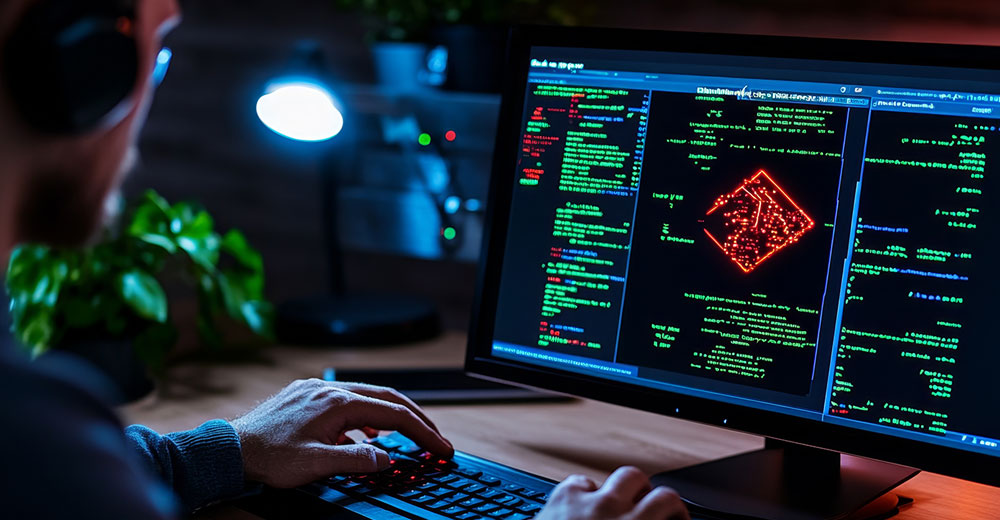AI red teaming — the practice of simulating attacks to uncover vulnerabilities in artificial intelligence (AI) systems — is emerging as a critical defense strategy as AI technology becomes increasingly integrated into various industries. Unlike traditional applications built on predictable coding frameworks, AI systems present unique challenges due to their dynamic, adaptive, and often opaque nature. These complexities create new vulnerabilities that adversaries can exploit, making AI red teaming an essential component in safeguarding these systems.
Understanding AI Red Teaming
AI red teaming involves systematically probing AI models to identify vulnerabilities and potential threats before malicious actors can exploit them. Similar to traditional red teaming, where security experts simulate cyberattacks to uncover weaknesses in static systems, AI red teams emulate adversarial tactics specific to AI environments. However, AI red teaming comes with added complexity, as the threat landscape surrounding AI systems is more unpredictable and continuously evolving.
Key Areas of AI Red Teaming
AI red teaming covers several critical areas to ensure comprehensive security:
- Adversarial Machine Learning (ML):
This technique involves crafting inputs designed to deceive AI models into making incorrect predictions. Adversarial inputs can subtly manipulate a model’s behavior, leading to unintended outcomes. For instance, minor modifications to an image can cause a visual recognition system to misclassify it, potentially creating serious security risks. - Model File Security:
Model files, often stored in serialized formats, can be vulnerable to malicious code. Attackers can embed harmful code within these files, and if loaded by an unsuspecting machine learning engineer, the code can compromise sensitive systems. This makes securing the model files essential to prevent such exploits. - Operational Security in AI Workflows:
AI red teams also analyze the operational workflows and supply chains associated with AI systems. They identify potential exposure points where adversaries might inject malicious elements or exploit system weaknesses. This is particularly important in industries that deal with sensitive data, such as healthcare and finance, where compromised AI models can have far-reaching consequences.
Why AI Red Teaming Is Essential
The widespread adoption of AI across industries has brought significant benefits, but it has also introduced considerable risks. AI systems are often trained on sensitive data, deployed in complex environments, and integrated into critical decision-making processes. These factors increase the attack surface, giving adversaries more opportunities to manipulate models or disrupt operations.
Vulnerability in Large Language Models (LLMs):
LLMs, such as those used in natural language processing applications, can be particularly vulnerable to adversarial manipulation. Attackers can exploit these models by manipulating inputs to produce unintended or harmful outputs, potentially leading to misinformation, biased decisions, or data leakage.
Intellectual Property Theft and Sabotage:
AI models represent valuable intellectual property, making them a target for theft or sabotage. Attackers can exfiltrate proprietary models, compromising business operations and competitive advantage. In some cases, maliciously crafted models can act as malware, leaking sensitive data when deployed.
Real-World Risks and Consequences:
An example of this threat is when an attacker embeds harmful code within a serialized model file. If an unsuspecting engineer loads the compromised file, the attacker could gain access to the underlying system, potentially compromising critical operations. This risk is particularly alarming in sectors such as healthcare, where compromised AI models can affect patient care, and finance, where erroneous decisions can result in financial losses and regulatory breaches.
Challenges Unique to AI Systems
AI systems introduce challenges that are distinct from traditional software applications:
- Model Complexity: AI models are inherently complex, with multiple layers of neural networks and intricate training processes. Identifying vulnerabilities in such systems requires specialized expertise and advanced testing methodologies.
- Dynamic and Adaptive Nature: Unlike static software systems, AI models continuously evolve, adapting to new data and changing conditions. This adaptability makes it difficult to predict all potential vulnerabilities.
- Opacity and Black Box Models: Many AI models, especially deep learning models, function as “black boxes,” making it difficult to understand how they arrive at their decisions. This opacity complicates the process of identifying and mitigating potential security risks.
The Growing Need for AI Security Standards
Given the increasing reliance on AI across industries, there is a growing need to establish security standards specifically designed for AI systems. Organizations must incorporate AI red teaming as a routine practice to proactively identify vulnerabilities and ensure the integrity and security of their AI-powered operations.
As AI technologies continue to advance and become more embedded in critical infrastructure, the role of AI red teaming will only become more vital. It serves as a safeguard against the growing number of threats targeting AI systems, ensuring that these systems remain secure, reliable, and trustworthy in an ever-evolving digital landscape.



0 Comments